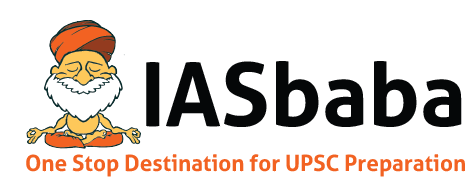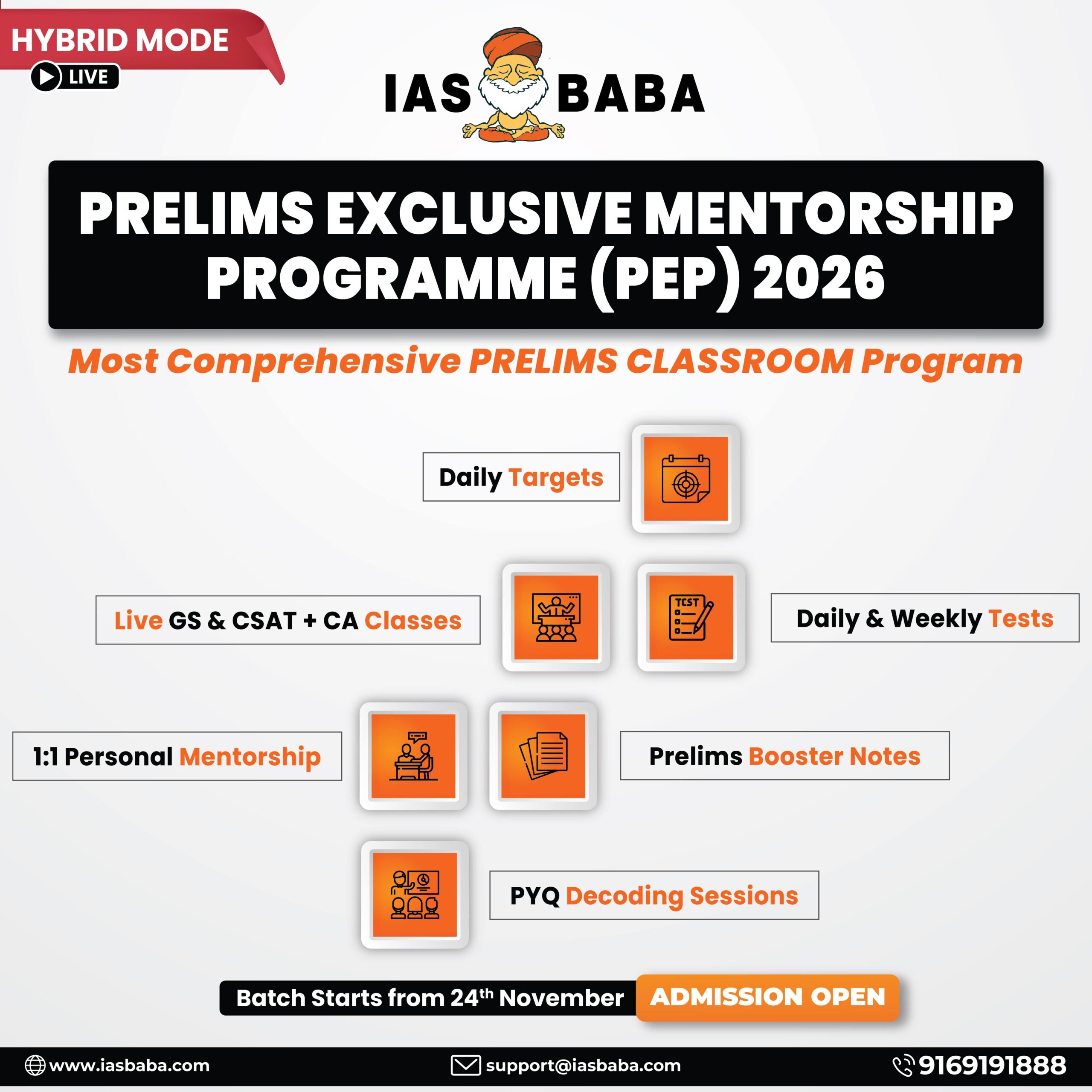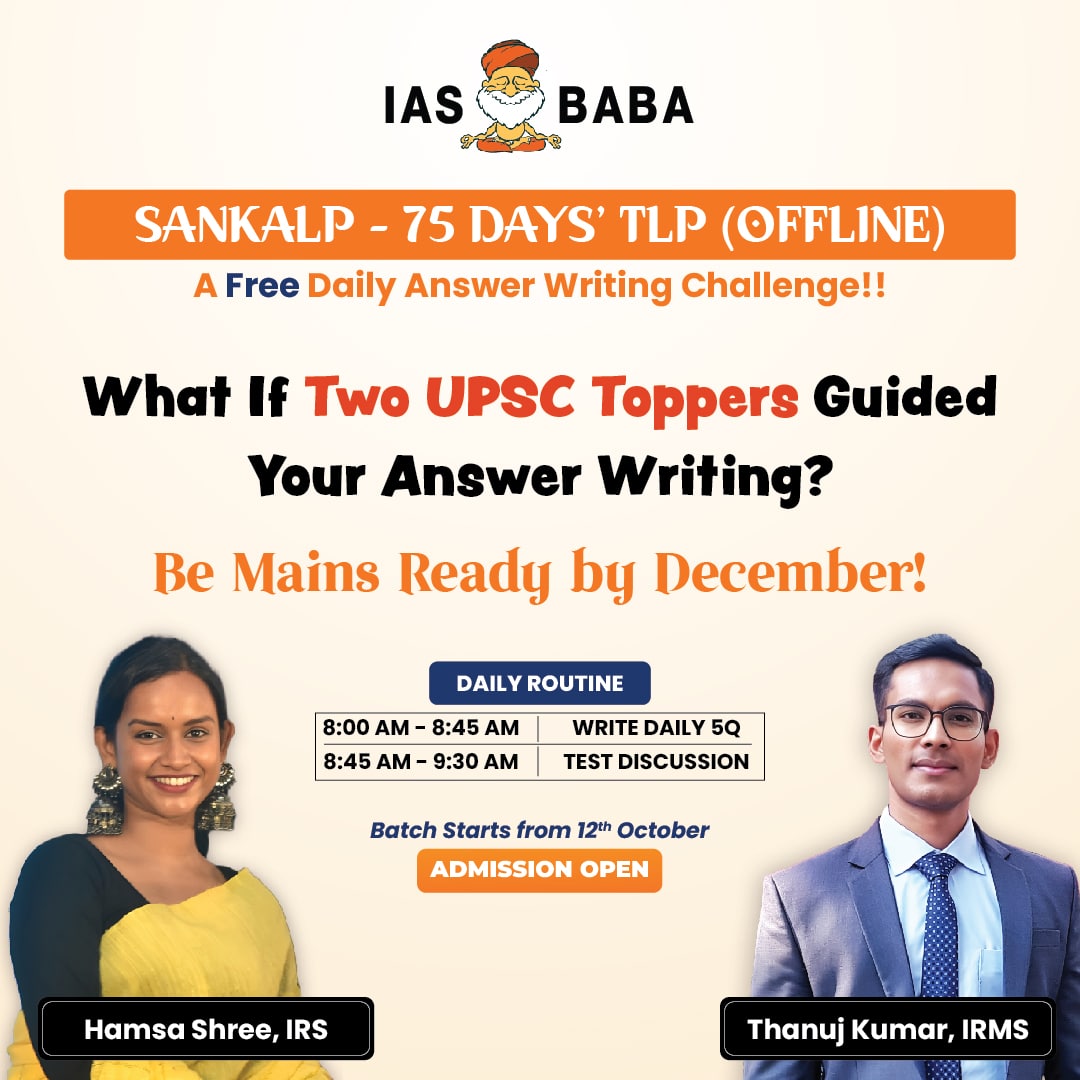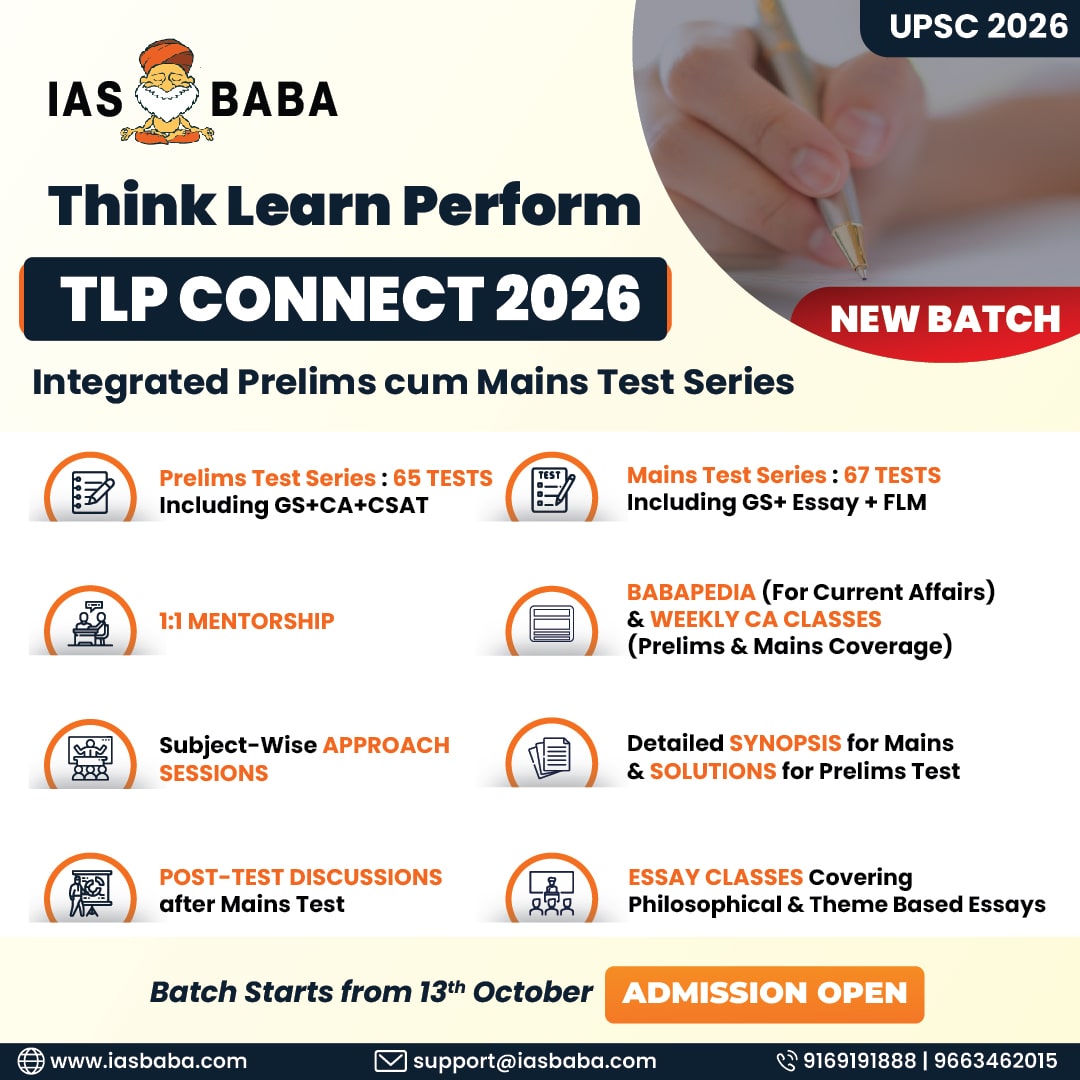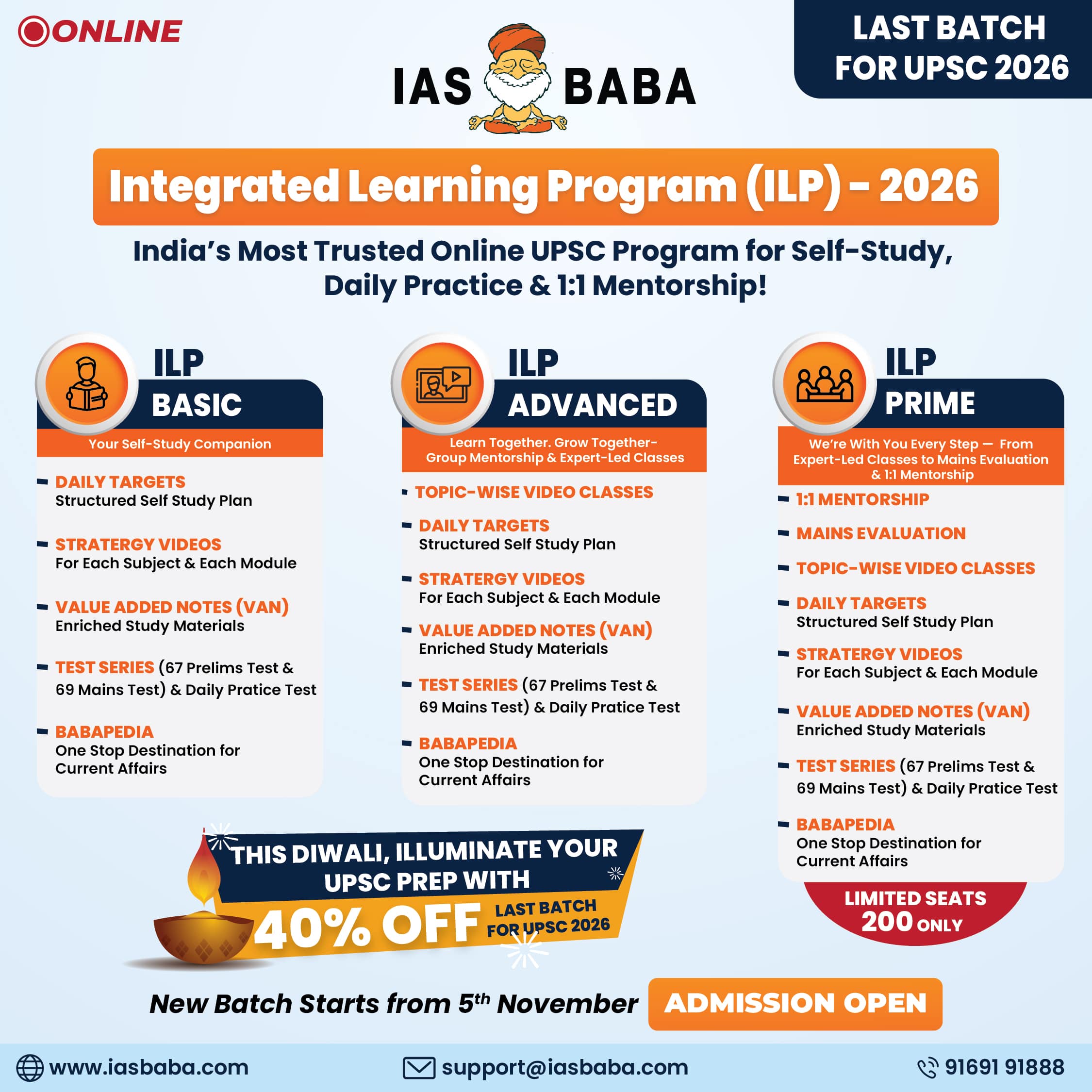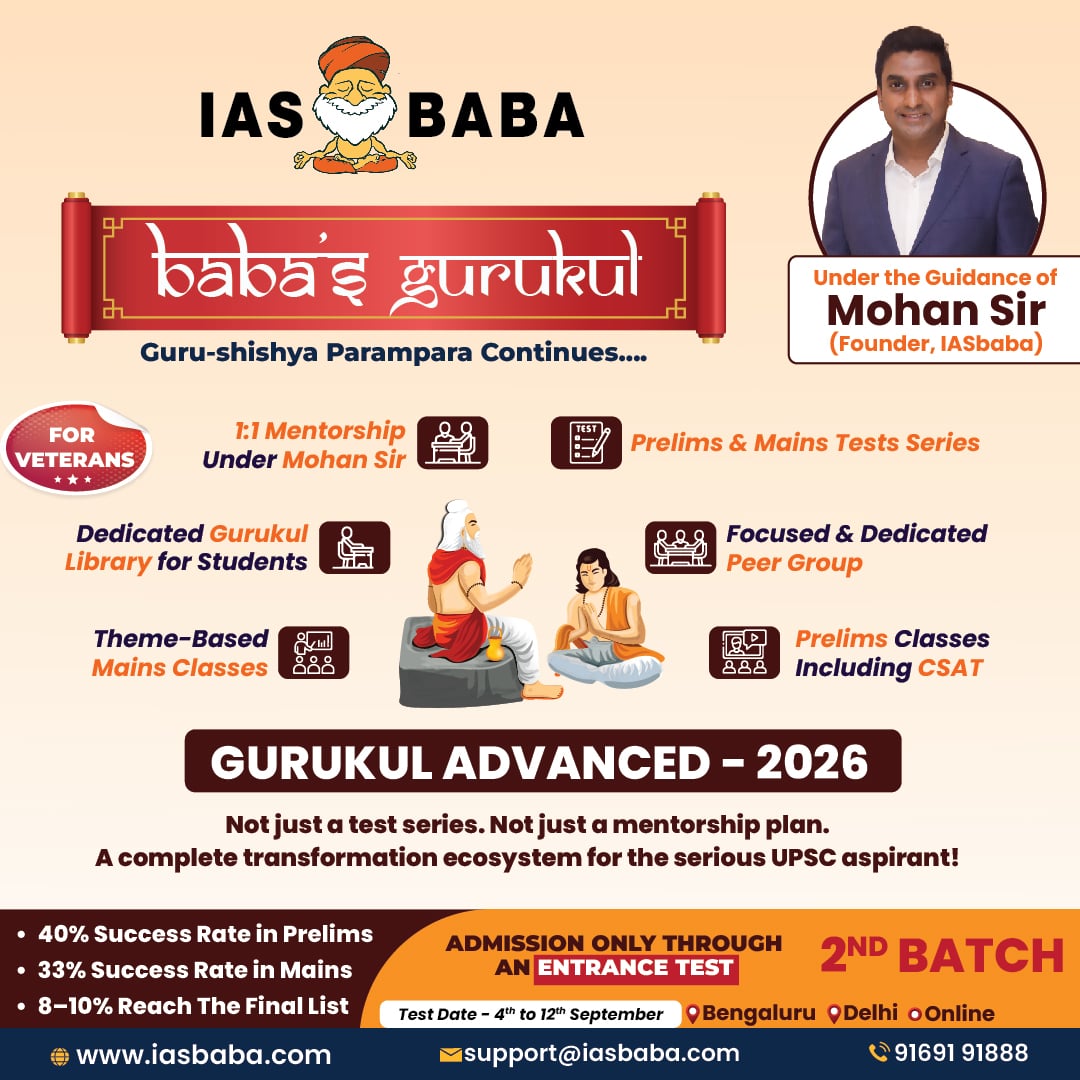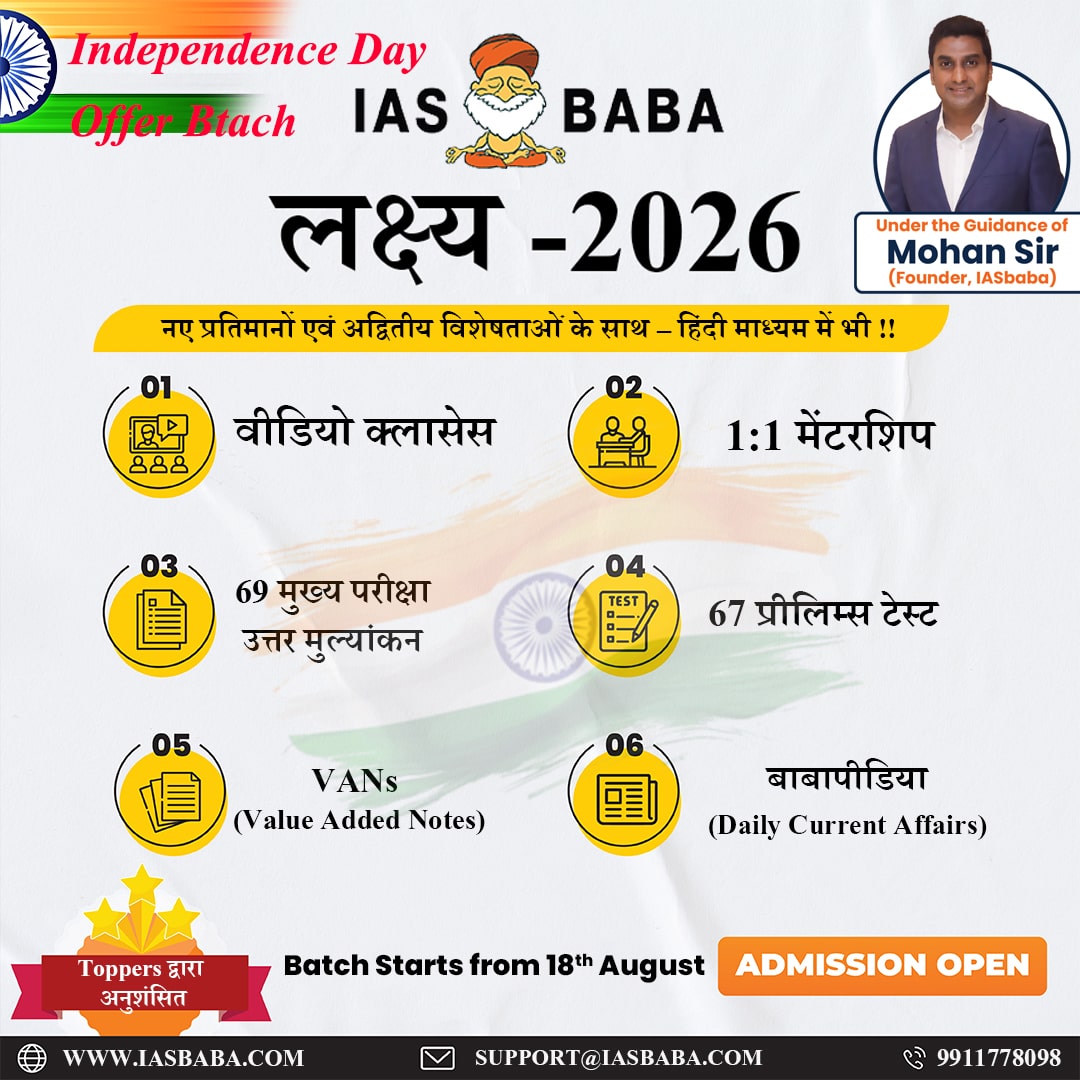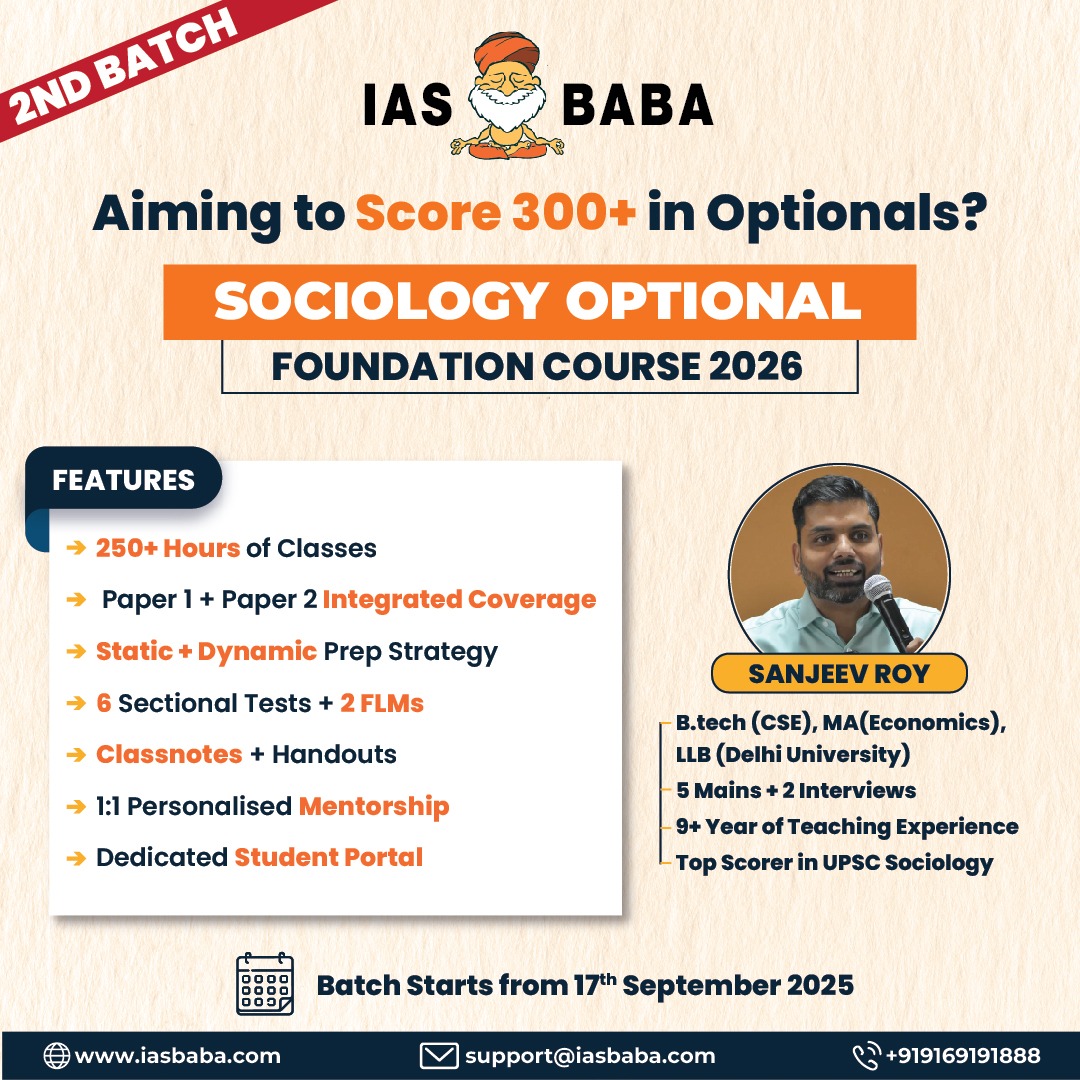IASbaba's Daily Current Affairs Analysis
Archives
(PRELIMS Focus)
Category: SCIENCE AND TECHNOLOGY
Context: Elon Musk’s Starlink has officially received a key licence from India’s Department of Telecommunications to offer satellite internet services in the country.
Decoding Context:
This licensing clears a major regulatory hurdle and brings Starlink closer to launching commercial operations in India.
Starlink is now the third company to secure a Global Mobile Personal Communication by Satellite (GMPCS) licence in India, following Eutelsat’s OneWeb and Reliance Jio
The government has opted for administrative allocation of spectrum for satellite communication, supporting Starlink’s stance over the auction-based approach favored by some Indian telecom operators like Jio. This decision is based on the technical challenges of auctioning shared satellite spectrum.
Once spectrum is allocated, Starlink will be able to begin commercial roll-out. The service is expected to significantly expand internet access, particularly in remote and underserved regions where traditional infrastructure is difficult to deploy.
Learning Corner:
Starlink: A Brief Note
Starlink is a satellite internet constellation project developed by SpaceX, the aerospace company founded by Elon Musk. Its primary goal is to provide high-speed, low-latency internet access across the globe, especially in remote and underserved areas where traditional broadband infrastructure is limited or unavailable.
Launched in 2019, Starlink operates by deploying thousands of low Earth orbit (LEO) satellites, which communicate with user terminals (dishes) on the ground. As of 2025, it has become one of the largest satellite networks in the world.
Starlink has now received approval to operate in India, marking a major step in expanding internet connectivity in rural regions. It competes with other global satellite internet providers like OneWeb and Amazon’s Project Kuiper.
Comparison between Administrative Allocation of Spectrum and Auctioning of Spectrum:
| Feature | Administrative Allocation | Auctioning of Spectrum |
|---|---|---|
| Definition | Government directly assigns spectrum to an entity | Spectrum is sold through a competitive bidding process |
| Process | Non-competitive; based on application and policy | Competitive; bidders offer prices for spectrum blocks |
| Purpose | Used for public interest, strategic or technical reasons | To generate revenue and promote market competition |
| Cost to Operator | Often lower or nominal charges | Market-driven; can be expensive |
| Suitability | Ideal for satellite communications, defence, or research | Common for mobile telecom (4G/5G services) |
| Spectrum Sharing | Facilitates easier coordination and sharing | Difficult to manage shared use post-auction |
| India’s Recent Preference | Chosen for satellite communication like Starlink | Still used for terrestrial telecom operators like Jio and Airtel |
Summary:
- Administrative Allocation is preferred for services like satellite internet, where spectrum is shared globally and auctioning is technically unfeasible.
- Auctioning is suited for mobile services, where exclusive spectrum rights are required and revenue generation is a priority.
Source : THE HINDU
Category: ENVIRONMENT
Context A new study has made the controversial idea of stratospheric aerosol injection (SAI)—a form of solar geoengineering—more realistic by proposing innovative methods to reduce its costs and technical barriers
Decoding Context:
SAI involves injecting tiny reflective particles, inspired by volcanic eruptions, into the earth’s stratosphere at around 20 km altitude to reflect sunlight and cool the planet. While this could help reduce the impacts of climate change, the approach is contentious because its effects would be global, with potential risks and side effects for all countries.
Key Points from the Study:
- Mechanism: SAI aims to cool the planet by spraying aerosols into the stratosphere, mimicking the cooling effect observed after major volcanic eruptions.
- Technical Advances: The research explores how the type of material used, the timing, and the location of injections impact effectiveness and cost. Technical challenges are greater at higher altitudes but can be addressed by optimizing these factors.
- Scale: The study found that 12 million tonnes of sulfur aerosols over six years at an altitude of 13 km could produce the desired cooling effect. This is comparable to the amount released by the 1991 Mount Pinatubo eruption.
- Risks and Challenges: SAI does not require new aircraft, but modifying existing planes is technically challenging. There are concerns about side effects, such as delayed recovery of the ozone layer, changes in rainfall, and geopolitical issues. Some effects, like regional droughts or altered weather patterns, could be severe.
- Global Impact: Since SAI would affect the entire planet, any country’s actions would have worldwide consequences, not always beneficial for all regions.
Conclusion:
The study brings SAI closer to practical implementation by addressing cost and technical hurdles, but significant scientific, ethical, and governance challenges remain. The debate continues as researchers weigh the potential benefits against the risks of large-scale climate intervention.
Learning Corner:
Artificial Weather-Tweaking Ideas
Artificial weather-tweaking, or weather modification, refers to deliberate human interventions in natural weather processes to alter climatic conditions. These ideas aim to mitigate climate change, enhance rainfall, or prevent extreme weather events.
Major Techniques:
- Cloud Seeding: Spraying chemicals like silver iodide or salt into clouds to induce rainfall.
- Stratospheric Aerosol Injection (SAI): Injecting reflective particles into the stratosphere to reflect sunlight and cool the Earth.
- Marine Cloud Brightening: Spraying sea salt into marine clouds to make them more reflective and enhance their cooling effect.
- Carbon Capture and Storage (CCS): Though not weather modification directly, CCS removes CO₂ to influence long-term climate.
- Space-Based Reflectors: Placing mirrors or shields in orbit to reflect a portion of incoming solar radiation.
Concerns:
- Unpredictable Side Effects: May lead to regional droughts, altered monsoons, or ozone depletion.
- Ethical & Geopolitical Issues: Global consequences from local actions could lead to conflicts or disputes.
- Governance Vacuum: Lack of international laws or consensus on who controls such powerful technologies.
Source : THE HINDU
Category: SCIENCE AND TECHNOLOGY
Context : MagIC Microscopy (Magnetic Isolation and Concentration cryo-electron microscopy) is a cutting-edge advancement in the field of structural biology, particularly in cryo-electron microscopy (cryo-EM)
Decoding Context
Cryo-EM is a powerful imaging technique used to visualize biomolecules like proteins, viruses, and complexes at near-atomic resolution by flash-freezing samples and imaging them with an electron beam.
Challenges Addressed:
- Traditional cryo-EM requires relatively high concentrations of biological samples to obtain clear images. This requirement poses a major limitation when studying rare or difficult-to-purify molecules, which are often available only in tiny amounts or very dilute solutions.
- Low sample concentrations typically result in poor signal-to-noise ratios, making it difficult to capture detailed structural information.
Innovations Introduced by MagIC:
- Magnetic Bead Attachment: In MagIC microscopy, target molecules are chemically bound to tiny magnetic beads. These beads serve as handles to isolate and concentrate the molecules from extremely dilute solutions.
- Magnetic Concentration: By applying external magnetic fields, the beads along with the attached molecules are concentrated into a small area, dramatically increasing local concentration without increasing overall sample volume.
- Cryo-EM Imaging: The concentrated molecules on beads are then flash-frozen and imaged using standard cryo-EM techniques, allowing high-resolution structural data collection from much more dilute samples.
- DuSTER Workflow: To further enhance data quality, a computational pipeline named DuSTER is employed. It filters out background noise and artifacts, improving the clarity and accuracy of the images obtained.
Advantages of MagIC:
- Enables Study of Rare Samples: Researchers can now analyze molecules present at concentrations 100 times lower than previously possible, opening doors to study rare biological complexes, transient intermediates, or hard-to-express proteins.
- Reduces Sample Volume: Since the technique concentrates molecules locally, the total amount of biological sample required is reduced, which is cost-effective and less resource-intensive.
- Speeds Up Data Collection: Concentrated samples yield better-quality images faster, accelerating the pace of structural biology research.
- Broader Applications: This method can aid drug discovery, vaccine development, and understanding fundamental biological processes by providing detailed structural insights into molecules previously inaccessible by cryo-EM.
Potential Impact:
MagIC microscopy represents a major step forward in overcoming a longstanding bottleneck in structural biology. It expands the usability of cryo-EM to a wider range of biological questions, especially those involving scarce or precious samples. By improving both the efficiency and accessibility of molecular imaging, MagIC microscopy has the potential to significantly advance biomedical research and innovation.
Learning Corner:
Overview of different microscopy techniques commonly used
- Light Microscopy
- Uses visible light and lenses to magnify samples.
- Types: Bright-field, Phase-contrast, Differential Interference Contrast (DIC), Fluorescence microscopy.
- Used for observing live cells, tissues, and stained samples.
- Resolution limit: ~200 nm.
- Electron Microscopy (EM)
- Uses electron beams instead of light for much higher resolution.
- Types:
- Transmission Electron Microscopy (TEM): Electrons pass through ultra-thin samples; reveals internal structures.
- Scanning Electron Microscopy (SEM): Scans the surface with electrons; gives 3D surface images.
- Resolution limit: ~0.1 nm (TEM).
- Cryo-Electron Microscopy (Cryo-EM)
- Samples are flash-frozen to preserve native structure.
- Used for studying biological macromolecules at near-atomic resolution.
- Includes single-particle analysis, electron tomography.
- Confocal Microscopy
- Uses laser light and optical sectioning for sharper 3D images.
- Minimizes out-of-focus light by using pinholes.
- Common in cell biology for imaging fluorescently labeled specimens.
- Atomic Force Microscopy (AFM)
- Uses a sharp tip scanning the surface to create a topographic map.
- Can image surfaces at atomic resolution.
- Useful for materials science and biological samples.
- Super-Resolution Microscopy
- Breaks the diffraction limit of light microscopy.
- Techniques include STED (Stimulated Emission Depletion), PALM (Photo-Activated Localization Microscopy), and STORM (Stochastic Optical Reconstruction Microscopy).
- Enables imaging of cellular structures at nanometer scale.
- Magnetic Resonance Imaging (MRI)
- Though primarily a medical imaging technique, MRI uses magnetic fields and radio waves for detailed soft tissue images.
- Not a traditional microscope but important for imaging internal structures non-invasively.
Source: THE HINDU
Category: POLITY
Context : Violence erupted in Manipur after the arrest of Kanan Singh, a Meitei leader linked to ethnic violence in 2023.
Decoding Context:
Protests quickly turned violent, prompting curfews and internet shutdowns in key districts. The unrest reflects deep-rooted ethnic tensions between the Meitei majority and the Kuki-Zomi tribes, which escalated after a court order favouring Scheduled Tribe status for Meiteis—triggering fears among Kukis of marginalization.
Underlying issues include disputes over land rights, political representation, and access to government benefits. Despite security measures and political calls for peace, the conflict remains unresolved, with periodic flare-ups highlighting fragile communal relations in the region.
Learning Corner:
Geography and Location of Manipur (Concise & Focused)
- Location:
- Northeastern India, part of the Seven Sister States.
- Borders Nagaland (N), Assam (W), Mizoram (S), and Myanmar (E).
- Area:
- Covers around 22,327 sq km.
- Topography:
- Mostly hilly terrain surrounding the central Imphal Valley.
- Imphal Valley — main population and agricultural hub.
- Example: Imphal city, the capital, is in this valley.
- Rivers & Water Bodies:
- Imphal River and Barak River basin support agriculture.
- Loktak Lake: Largest freshwater lake in Northeast India, famous for floating islands called phumdis.
- Strategic Location:
- Borders Myanmar, serving as an important corridor for India-ASEAN connectivity.
- Example: Stillwell Road links India to Myanmar and China, crucial for trade and military.
- Climate & Biodiversity:
- Subtropical climate with rich forests and biodiversity.
- Example: Keibul Lamjao National Park on Loktak Lake — the only floating national park in the world, habitat of the endangered Sangai deer.
Source : THE HINDU
Category: POLITY
Context : The Government of India has launched the UMEED (Unified Waqf Management, Empowerment, Efficiency and Development) portal
This acts as a centralized digital platform for the real-time registration, verification, and monitoring of Waqf assets nationwide. The portal, inaugurated by the Ministry of Minority Affairs, is designed to create a comprehensive digital inventory of all Waqf properties, featuring geo-tagging and detailed documentation for each asset.
Key features include:
- Mandatory Registration: All Waqf properties must be registered on the portal within six months of launch, with detailed information such as ownership documents, exact measurements, and geotagged locations.
- Transparency and Accountability: The portal aims to ensure greater transparency, accountability, and public participation by making Waqf data digitally traceable and accessible.
- Grievance Redressal: An online grievance redressal system is included for prompt resolution of issues related to Waqf property management.
- Integration with GIS: The platform integrates with GIS mapping and e-governance tools for efficient tracking and management.
The initiative is aligned with the Waqf (Amendment) Act, 2025, and is intended to streamline administration, curb misuse, and empower beneficiaries—especially women, children, and economically weaker sections—by ensuring fair and effective utilization of community-owned assets.
Learning Corner:
Brief Note on Waqf Board
- Definition:
A Waqf Board is a statutory body established by the government under the Waqf Act to manage and regulate Waqf properties—religious endowments made by Muslims for charitable, religious, or community purposes. - Purpose:
The board ensures the proper administration, protection, and utilization of Waqf assets for the benefit of the community, preventing misuse or illegal occupation. - Functions:
- Registering Waqf properties and maintaining records.
- Supervising management and resolving disputes related to Waqf properties.
- Developing and maintaining Waqf properties to generate revenue for charitable activities.
- Protecting the rights of beneficiaries, often including vulnerable groups.
- Working closely with the Central Waqf Council for policy guidance.
- Legal Framework:
- Governed by the Waqf Act, 1995 (amended several times), which mandates the constitution of State Waqf Boards and defines their powers and responsibilities.
- Significance:
Waqf Boards play a critical role in preserving Muslim heritage, managing mosques, graveyards, schools, and other community assets, contributing to social welfare.
Certainly! Here’s the rewritten brief note on the Waqf Board in India with recent changes, without citations:
Recent Legislative Changes: Waqf (Amendment) Act, 2025
The Waqf (Amendment) Act, 2025, which came into effect in April 2025, introduces several reforms to improve transparency, accountability, and governance in Waqf administration. Key features include:
- Centralized Management:
- Creation of a Central Waqf Portal for real-time registration, verification, and monitoring of Waqf properties across the country.
- Mandatory registration of all Waqf properties within six months, with each assigned a unique identification number.
- Governance Reforms:
- Introduction of mandatory elections for Waqf Board members; nominated members must step down, and elected members must form the majority.
- Inclusion of non-Muslim members on Waqf Boards to promote inclusivity and diverse viewpoints.
- Property Classification:
- Ending the practice of declaring ‘Waqf by user’ for properties without formal documentation.
- Government properties previously claimed as Waqf are now protected from such declarations.
- Women’s Rights:
- Strengthened provisions ensuring inheritance rights for women in Waqf properties, promoting gender equity aligned with Islamic principles.
- Appeal Mechanism:
- Establishment of an appeal process allowing High Court review of decisions made by Waqf tribunals within 90 days.
Challenges and Controversies
- Some Muslim organizations have opposed the amendments, viewing them as a threat to religious autonomy and fearing possible misuse of Waqf properties.
- Implementation varies across states, with some facing administrative and legal challenges adapting to the new governance structure.
- Protests and unrest have occurred in certain regions in response to the amendments.
Source: THE HINDU
(MAINS Focus)
| Date: 9-06-2025 | Mainspedia | |
| TOPIC: Boosting India’s Apparel Exports | GS Paper III – Economy | |
| Introduction (Context)
India has a deep-rooted tradition in textiles and apparel (T&A). India’s textiles and apparel (T&A) sector employs 45 million people and contributes 2.3% to GDP. Despite this, India’s share in global textile trade is only 4.2% ($37.8 billion out of $897.8 billion). In the apparel segment, India’s share is just 3% ($15.7 billion of $529.3 billion). The share has remained stagnant over two decades. India has set a $40 billion export target for 2030, but exports are declining at –2% AAGR recently. These numbers make it clear that without a significant shift in policy and strategy, the $40-billion goal will remain a pipe dream. |
||
Fundamental constraint: India’s lack of scale. |
|
|
Case study |
Shahi Exports
|
|
| Reforms needed |
Reforms needed are:1. Capital Access & Affordability
2. Labour Reforms & Skilling
3. Infrastructure: PM MITRA Parks as Hubs
4. Export-Focused Incentives
|
|
| Value addition | Terminologies
|
|
| Way forward |
|
|
| Conclusion
India’s textile and apparel sector holds immense potential for employment generation, value addition, and global market penetration. However, this potential remains underutilized due to lack of scale, high cost of capital, rigid labour laws, and fragmented supply chains. To transform the industry and achieve the ambitious $40 billion apparel export target by 2030, India must adopt bold, targeted reforms—enabling large-scale, export-oriented manufacturing units, especially in underdeveloped regions. |
||
Mains Practice Question
Q Discuss the interplay between industrial hubs like PM MITRA parks, export incentives, and labour policy reforms in strengthening India’s garment sector within the global trade framework.. (250 words, 15 marks)
| Date: 9-06-2025 | Mainspedia | |
TOPIC: ULLAS program for literacy |
GS Paper II – Governance | |
Introduction (Context)
|
||
What Does “Full Literacy” Mean? |
|
|
What is the ULLAS scheme? |
|
|
| Implementation mechanism |
|
|
| Status of ULLAS |
|
|
| State wise achievements |
State-wise Achievements
|
|
| Challenges |
|
|
| Value addition | Census 2011
Government schemes 1. Farmer’s Functional Literacy Project (1960s)
2. Women’s Functional Literacy Project (1970s)
3. National Adult Education Programme (NAEP) – 1978
4. National Literacy Mission (NLM) – 1988 to 2009
5. Saakshar Bharat Mission – 2009 to 2018
6. Padhna Likhna Abhiyan – 2020
|
|
| Way forward |
|
|
| Conclusion
The ULLAS scheme represents a modern, technology-enabled, and inclusive approach to adult education, aligning with both national priorities like NEP 2020 and global commitments such as the SDG 4. While the recent declarations of “full literacy” by states like Goa, Mizoram, and Ladakh are promising, the real success of ULLAS will lie in sustained learning, meaningful participation, and lifelong empowerment, especially for marginalized groups. |
||
Mains Practice Question
Q Literacy is foundational for inclusive development. Discuss how adult literacy initiatives can contribute to women’s empowerment and social equity. (250 words, 15 marks)
Daily Practice MCQs
Today’s – Daily Practice MCQs’ will be updated in our “Daily Current Affairs Quiz” section on our website
Please click on the below link
